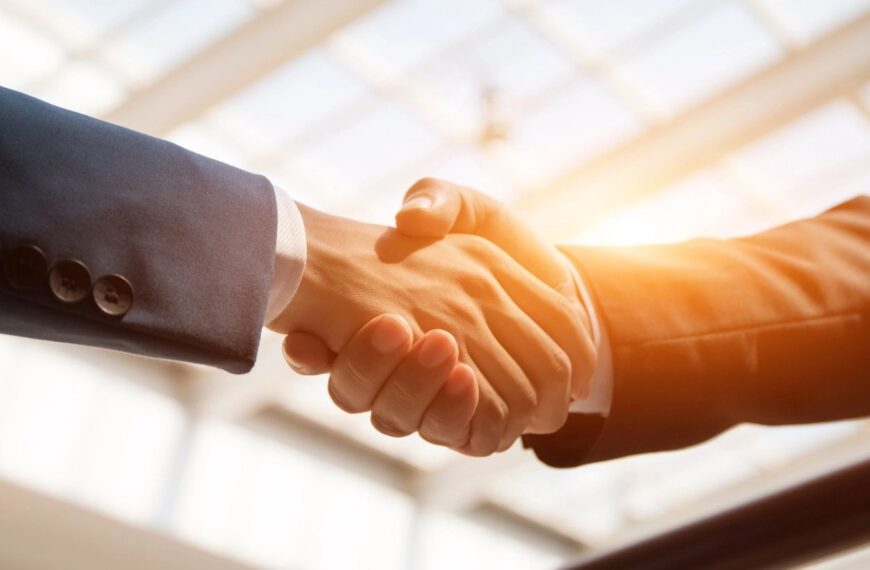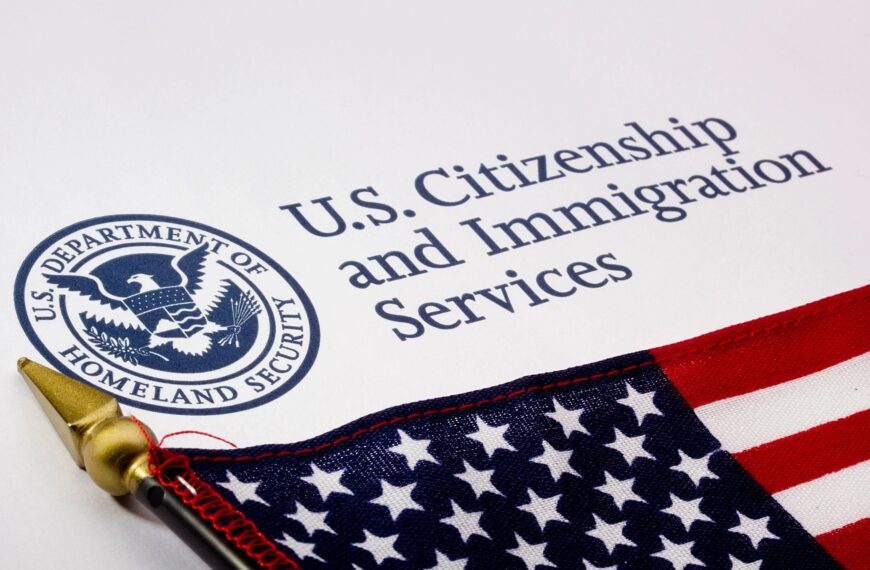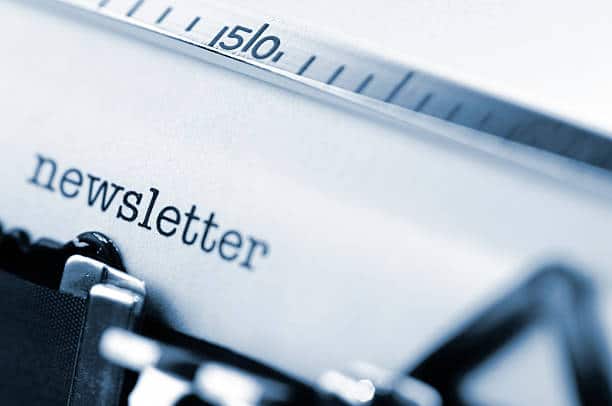How to Survive the first 30 days: Chapters 1&2

Chapter 1:
Moving to America from Australia is a huge decision for any Aussie. We hope that you enjoy reading our first chapter: Surviving the first 30 days.
COVID-19 Preface
COVID-19 has caused immeasurable hardships and created havoc for International travelers. Much of the content in this book assumes that we are not in the midst of a Global Pandemic.
Rather than remove content for this second edition, we retained the content as there are still Australians who are successfully obtaining Green Cards and visas and moving to America.
Pre-Flight Check List when moving to America
Just as your pilot runs through a checklist before heading down the runway, you too must create a checklist to ensure that when you arrive at your destination, you will have a smooth landing.
Below are some items that should be on your personal checklist for moving to America.
- Budget
- Insurance: Health/Travel/Property
- Accommodation Plan
- Communication Plan (phone, internet, and emergency)
- Local Credit and Bank Accounts
- Foreign Exchange
- Employment Plan (if seeking work)
- —————————- New York Bucket List
- —————————- your professional “Hit List.”
- —————————- items to take
- —————————- items to leave behind
- Passport
- Plane Ticket
- Membership to the Australian Community
Your individual lists will vary, but simply making a list is an important step before moving to America. Knowing also what to leave behind is almost as important as what to bring.
A good rule of thumb is that you should probably leave it behind if it needs a 240 to 110 AC adapter. Unlike Australia, most consumer electrical goods are cheap in the U.S. They are built to run on 110 volts natively!
Chicken Salt and Violet Crumbles
Any well-prepared Aussie will have planned and packed a few “necessities” before moving to America. The usual suspects are either coated in Cadbury chocolate or are items that have never graced the shelves of an American supermarket. Interestingly, in this second edition of Moving to the US for Aussies, several items, including Tim Tams, can be purchased at retail stores, including Target and Bed Bath and Beyond.
Australians have been bringing these items – everything from foodstuffs to cleaning products – through U.S. Customs for decades. It may be your first trip to the U.S., but Customs has already seen it all.
Fortunately, you have planned the swag of Aussie delicacies is well under the U.S. Customs limits. This is the perfect opportunity to get onto the Something to Declare line, which always seems considerably shorter than the Nothing to Declare line (queue).
Do not be surprised by a pithy comment from the Agent: “You Aussies and your [Item],” or a simple roll of the eyes before they stamp your card, smile, and then wave you through without incident.

If you purchase Duty-Free liquor or any liquid that exceeds the 100ml restriction for Domestic carry-on, be sure to transfer it to your checked bag as soon as you land. Thousands of Aussies have had their bottle of Bundy, or Perfume, confiscated by TSA Agents for exceeding the 100ml restriction when they transfer for their Domestic Flights!
The Carousel Moment when moving to America
For those who are moving to America from Australia with a fresh work visa or Legal Permanent Resident (LPR) status, in all probability, you have not had a chance to fully process your decision to move.
For the most part, you may have been completely focused on the logistics of how to get there, where to stay, what to take, what to leave behind, and where to store it if you do.
You may have been tirelessly searching the Internet looking for medium-term accommodation, checking its affordability. Hopefully, you have found a location to live that is a relatively short commute to, if not in the City itself.
If you are starting a new job, you may be excited about taking your career to the next level and competing with the best and brightest in your field from around the world – and then it hits you.
Standing at the airport carousel of your final destination, waiting for your second bag to arrive, all at once, a wave of anxiety washes over you, and you find yourself suddenly asking the question, “What was I thinking?” and “Was moving to America the right decision?”
As the realization sinks in that you are now past the point of no return, for the first time, you start to see the forest for the trees: The Big Picture starts to come into focus.
After the anxiety abates and the cold sweat warms to mild perspiration, you pick up your bags and then head into your first adventure: The Airport terminal.
Running the (Airport) Gauntlet
No matter what city you land in, be it LA or NYC, you are going to have to deal with transportation to your hotel or that “sunny” apartment you found on the Internet.
Given many Australians have just spent 20+ hours traveling, are sleep deprived, and want to get to their hotel or apartment, this makes them especially vulnerable to Airport scams, especially related to transportation.
Transportation comes in many forms, bus, train, or taxi, but the scourge of many Airports are the private and sometimes unlicensed/uninsured drivers commonly referred to as Gypsy Cabs.
Uber/Lyft notwithstanding, a Spruiker is usually lying in wait at the Arrivals gate aggressively asking new arrivers if they need transportation. If you fall victim to their bargain offer to take you to your destination, you are quickly pawned off to a driver who whisks you away, and a short time later, find yourself the victim of a scam.
Your best strategy is to avoid eye contact, and with your headset on making a bee-line directly to the Ground Transportation sign, you will find a bus or cab that will reliably take you to your destination.
In New York, Yellow Cab drivers have a flat fee from the airport to Manhattan. UBER also can be the most expensive form of transportation, but you are assured that you and your luggage arrive safely at your destination. The most cost-effective transportation in NYC is the Airtrain and Subway.
If you do take a private shuttle bus, beware of the risks of losing your luggage by the diver inadvertently (or deliberately) giving your luggage to someone else if there are multiple stops. Always keep an eye on your luggage, and be sure to have insurance in a worst-case scenario.
Bonus points if you can tell the cab driver more than the street number of your hotel, but between which avenues it is located. New York is a grid, so navigation is much easier by saying “10th Street between 1st and A” than “275 E 10th Street”.
The Tipping Point
One area where Australians seem to struggle when they are moving to America is in the area of tipping or gratuity. Unlike Australia, in New York, the minimum wage is only $15 per hour; therefore, workers often rely on tips to supplement their income.
Whether it is the Taxi driver who also assists you with your bags, the hotel worker who carries your bags to your room, or the server who smiles as they place your well-earned beverage on the hotel bar, the amount you tip can be a challenge for Australians moving to America.
Before you move to America from Australia, ask your bank (or banks) if they have any U.S. $1 bills that they can sell you. Arming yourself with at least 20 x $1 bills before you leave Australia should be enough to tip your way to your destination.
Sure there are ATMs at any U.S. airport, but it is somewhat challenging to hand over a U.S. $20 bill and ask for change if you attempt to tip someone $2 for helping you with your bags!
Taxis and Hotels
As a guide, taxi drivers are tipped either 15%, 20%, or 25% based on the service you receive. NYC taxis have a feature on their touch screens where it will calculate the tip for you. When it comes time to pay, you select the amount you want to tip.
If someone is helping with your bags at your hotel, the tip is usually $1 per bag or $2 per bag if you are staying in a luxury hotel. Hotel staff are usually tipped $2 to $5 per day, which you can leave in the room at the end of your stay.
Many hotels have a Concierge, and if you have a special request, say for organizing theatre tickets or a table at a restaurant, you would also tip an amount commensurate with the difficulty of the request. A simple request such as making a dinner reservation is $5; however, if they get you tickets to Hamilton, the sky may be the limit!
If a Doorman hails a cab or assists you in and out of a cab, they are usually tipped $1-$2 depending on the service.
Food and Alcohol
Restaurant servers are tipped in the 15%-20% range, though 20% is the norm in New York. If there are six or more of you in your party, many restaurants automatically add a 20% gratuity to the check, so ask first if it does not list it on the menu.
Be sure to check your bill when it arrives as some restaurants automatically add a tip to every check. You can be sure that your server is not going to alert you to the fact that you just double tipped!
Sitting at the bar, the tip is $1 per drink. However, if the drinks are $15+ each, $2 per drink may be more appropriate. If you are paying cash for drinks in NYC, there is no sales tax. However, if you order food or use a credit card, the tax will be added to the check.
This will at least eliminate any tipping faux pas at your hotel and ensure that a smile will always accompany service during the course of your stay.
Once you have your own place, then a new set of dynamics apply!
Deliveries
If you arrive home exhausted and decide to order “Take Out” rather than attempting to cook in your (often small) kitchen, even though the restaurant advertises free delivery, you still have to tip the person who brings your food to your door.
The tip amount is usually in the $3 – $5 range, but if the person just rode twenty blocks on a bicycle in rain or snow, you might want to consider adding a few extra dollars for a weather surcharge.

Tipping becomes a fine art by deciding on the tip to give to the people delivering your new furniture.
If your building has the convenience of an elevator, compared to carrying a sofa up five flights of stairs, you have to make a judgment call on how much more to tip than $10 per person.
Doorman Buildings
If you are among those living in a Doorman building, you will understand the convenience of having your deliveries signed for, and your dry cleaning delivered safely to your apartment.
Like all services in New York, it comes at a price.
Depending on the level of service you receive, the door always being held open for you, taxi doors being opened for you, in addition to signing for deliveries, etc., you may be looking at tipping $100 to $200 per doorman when Hannukah/Christmas rolls around each year.
As a guideline as to how much you should tip at the end of the year, if you were to tip $1 each time they provided service throughout the year, what would be the total?
A suggestion for Australians moving to America is to ask other residents how much they tip each year.
Do not be surprised if a list appears in your foyer showing how much each apartment tipped during the Holidays. It is not in every case, but some buildings allow posting the numbers!
Maintenance Staff/Superintendent
Chances are that at a minimum, there will be a building Superintendent or Super. Their responsibilities include taking out the trash (garbage) and recycling, and ensuring that the building common areas are clean and neat. Finding accommodation is a subject covered in a number of articles and we have a group dedicated to accommodation inside our private network. Safe accommodation is an essential component in moving to America from Australia.
If your heat and/or hot water is out, they are usually the first to call.
It is always important to say “Hi”, and be civil to your building maintenance staff. You never know when you might need assistance in your apartment.
If say you need to borrow a tool, or your toilet suddenly stops flushing, the speed at which your problem is resolved is based on two variables;
1) Your level of personal relationship, and
2) How much you tipped them in the past.
As a guide, even though it may be their job, if they do help with an issue around your apartment, $10 here or $20 there is going to ensure that anytime there is a problem, you are going to be prioritized over the person who never tips, or never bothers to say hello or ask about their family.
This can also be a best practice if you have a Doorman building, given that if you tip your maintenance staff throughout the year, you do not need to tip around Christmas.
Health and Beauty
If you decide to head off for a haircut or a new style, the guide for tipping is to tip 15% to 20% of the bill.
Similarly, if a day at the spa sounds like a great way to shake off any residual jetlag, you can add another 15% for great service.
Nail salons can be a challenge. For example, a mani-pedi can cost as little as $20 (if you pay cash) or as much as $55 or more at an upmarket salon. Should you tip the same for both services? Feedback is that $5 to $10 is the range, the higher of the two if they throw in a free back rub!
Haircuts are similar. Women can expect to pay around $50 for a haircut. Or as much as $800 if you have your bangs trimmed by Orlando Pita, the owner of Orlo in NYC.
Expect to tip a minimum of 15%. However, if you are lucky enough to be sitting next to Madonna or Gwynneth Paltrow at Orlo, why not make it an even $1,000? You now look like a millionaire, so why not tip like one!
Chapter 2: The Four “W”s of Survival when Moving to America
Australian Special Forces are regularly dropped off in a remote part of Australia as part of their survival training. In these situations, the mantra is the four “W”s: Water, Weather, Widow Makers, and Wigglies when moving to America from Australia.
In a way, survival when moving to America from Australia can be equated to these same four “W”s.
Water
There is a saying, “Spending money like water,” and in NYC, failing to ration your water has brought unstuck many ex-pats. Going out and spending $20 for breakfast, $15 for lunch, a few Flat Whites during the day, throw in cocktails with dinner, and you are going to burn through $1,500 to $2,500 per month – before you pay rent.
At this rate of burn and facing the prospect of a three to six-month window to find work, many Australians moving to America quickly run out of money before they see any positive cash flow into their bank account.
Our Preferred Rate on International money transfers is a great way to save money is to maximize your Australian dollars when you convert to USD. Check out the rate as it will be better than what your Bank is offering and most likely better than any of the online services.
It will be covered in a later chapter of moving to America from Australia in detail, but finding employment is not as easy as many Australians believe, so be very careful with your money and ration wisely!
Weather
At some point, you may find yourself settled into your new apartment, and you feel somewhat secure with the knowledge that you have a roof over your head. But like the weather, your situation can change very quickly.
Many unforeseen challenges could arise at any minute in the U.S., the most devastating are those that effect your Health, your Finances, and your Liberty (HFL). You cannot plan for every scenario, but failing to have basic health insurance in a country that charges $10,000 to $30,000 for an Appendectomy, is one risk you first need to retire.
This book on moving to America from Australia is a great start to understanding some of the challenges you may not have known exist, but always seek advice from a professional regarding matters that effect your HFL.
Widow Makers
Your would not pitch your tent under the dead branch of a tree, or on the precipice of a cliff, so don’t take any unnecessary chances that effect your HFL when moving to America from Australia.
Sometimes, the simple oversights that can have an Australian’s dream of living in the U.S. dashed. One common one is overstaying a visa.
The most devastating consequence of a visa overstay is that it will most certainly lead to a ban from entering the U.S., and ergo the denial of an E-3 Visa.
Here is a video that explains why checking your I-94 (the date you are permitted to stay in the U.S.)

If your visa expires on January 1st, this means you have until 11:59 PM on December 31st to be outside the U.S. If you mistakenly booked a flight that leaves on January 1st, you will have no problems leaving the country. Still, you can be sure that the next time you try and enter the U.S., you will be detained by U.S. Immigration, and you will find yourself on the next flight back to your last point of departure. Hopefully, that was Australia.
The Australian Community’s website contains several articles, including:
What NOT to Post on Social Media and
Top 10 Questions asked by Australian Expats
All of these posts serve as a guide to avoiding “Widowmakers” that can cut your stay in the U.S. short or worse.
Special Note on Personal Safety
In the City that never sleeps, you are often going to find yourself out enjoying New York’s amazing nightlife. Whether it is a Broadway show, an Upper West Side restaurant, or a Lower East Side bar, you may feel safe, but the situation can change instantly.
Crime may be down in NYC, but you are never completely safe. You must always be situationally aware of your surroundings, especially late at night and on the Subway.
If you are out with a friend, never leave your wingman. Some gangs use a male or female as a ruse to gain entry into your apartment, so NEVER invite a stranger into your home.
Crossing an NYC street against a DON’T WALK sign is very dangerous. However, it is common practice in NYC. One might assume that traffic only flows in one direction on an NYC street, but locals know to look in the other direction for the delivery guy on a bicycle riding against the traffic before making their dash.
Before you can start behaving like a native New Yorker, you first need to understand all of the risks. If New York decides to hand you a life lesson, you are not always able to simply dust yourself and walk away.
Wigglies
In Australia, you know to first check your boots for spiders or other wigglies that may have decided overnight to make your R.M. Williams their new home. Further, checking that a Common Brown is not sunning itself on a cement block before heading to the Hills Hoist with a basket full of laundry is second nature.
To be literal, it is important to look down in New York as well. Whether it is stepping in the by-product of an inconsiderate dog owner or a visit to the E.R. after tripping on an uneven sidewalk, looking down can be just as important as looking forward.
Like their Aussie counterparts, New York Wigglies can also enter our lives via stealth. These Wigglies can be “Consultants” who claim to help you find work – naturally for a fee, internet accommodation scams, or simply bad advice on social media sites that lead to financial hardship or legal issues.
It is unfortunate that some Australians are taking content from our website and others, and charging a fee for the same information. Everyone is entitled to make a living, but it is a very special individual who steals intellectual property from a charity.
Transportation
New York is full of scammers, all of whom are keen to separate you from your money. It is not always easy to tell, but a heads up is looking a well-rehearsed sales pitch that begins with “Pardon the interruption…” and finishes with …God bless”, chances are they are not “homeless”, and they do this for a living.
These scams can be quite elaborate and ask for more than just a “nickel, dime or a penny”.
There are stories of someone who would dress up as a Nun during the St Genaro Festival on Mulberry Street to scam money from unsuspecting tourists. Another was a well-dressed businessman claiming his wallet was lost/stolen and needed $55 to get back to Connecticut.
The more sophisticated panhandlers target Amtrak trains awaiting departure, and the pitch is that they need $100 to get back home as there was [Insert issue] with their ticket.
In these and similar scams, the person is playing on the heartstrings of generous individuals, and Australians are amongst the most vulnerable.
The Antidote
Not being able to differentiate between a genuine plea for help and a convincing scam does not mean that you are forced to either feel guilty or fall victim. The simple solution is to make an annual donation to a charity that assists New Yorkers in crisis. The Bowery Mission, the Red Cross, the Salvation Army, etc., all have programs to assist the homeless and help families in crisis.
By financially supporting charities that directly assist New Yorkers in crisis, you are armed to know that you have already donated food, clothing, or money the next time someone asks for money on the subway or the street.
It does not completely make you immune to a plea for help, but the good news is that you still have a soul. In a later chapter, we discuss New York in the Rear View Mirror. However, the day that you stop saying “There but for the Grace of God go I”, it might be time to book your return flight home.
The Emotional Cost of Moving to America
Aside from scammers who can be financially devastating, some individuals can emotionally bankrupt us as well. Relationship advice is not the subject matter of this book, but being alone in a big city can lead to questionable relationship decisions.
Building a circle of Australian friends (not virtual) is important as they can quickly assist you in finding your moral compass. Aussie friends, as we all know, can be brutal when it comes to offering personal advice, whereas Americans tend to be less direct for fear of hurting your feelings.
Rest assured, there are many New Yorkers who will want to take you in the wrong direction, so a quick check of your Aussie Compass should keep you on the right path!
A Positive First Step to Moving to America
Joining The Australian Community is a great first step for any Australian who is moving to America. Making social and professional connections with other Australians not only gives a sense of home, but you can also tap into the collective brain’s trust of thousands of other professional Australians who have most probably been in your situation at some stage.
It is not uncommon for single members to attend our events and make new (real world) friends on the social side of things.
Click here to read Chapter 3 The Hierarchy of Ex-Pat Needs.
Click here to read “Moving to the US for Aussies” from the beginning.
Before you send money Overseas!
Use this Currency Converter to gauge how much money you could save over your existing FOREX service by accessing The Australian Community’s Preferred OFX Rate.
Currencies can fluctuate by the minute. This Converter is indicative of the Preferred OFX Rate at this time.
However, once you register and access our Preferred OFX Rate, you will see the current converted rate, and the converted amount before making your transfer.
About The Australian Community
Founded in 2011, we connect more Australians in America.
If you are a professional Australian taking your career to the next level, or the U.S. is the next step in your company’s global expansion, we can connect you to all of the resources you need for success in America.
Did you find this article helpful? Make a Donation!
The Australian Community is a 501(c)(3) organization, and all donations are fully tax-deductible under the IRS Code.
Join The Australian Community.
Learn more about the benefits of joining The Australian Community in America.








